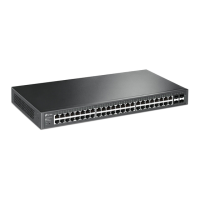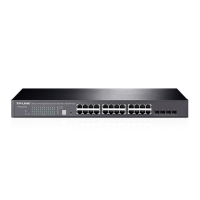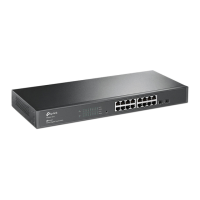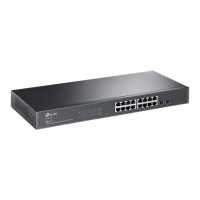Configuring LAG LAG Configuration
Configuration Guide
119
Group ID Specify the group ID of the LAG. Note that the group ID of other static LAGs
cannot be set as this value.
The valid value of the Group ID is determined by the maximum number of LAGs
supported by your switch. For example, if your switch supports up to 14 LAGs,
the valid value ranges from 1 to 14.
Port Priority
(0-65535)
Specify the Port Priority. A smaller value means a higher port priority.
The port with higher priority in an LAG will be selected as the working port to
forward data, and at most eight ports can work simultaneously. If two ports
have the same priority value, the port with a smaller port number has the higher
priority.
Mode Select the LACP mode for the port.
In LACP, the switch uses LACPDU (Link Aggregation Control Protocol Data Unit)
to negotiate the parameters with the peer end. In this way, the two ends select
active ports and form the aggregation link. The LACP mode determines whether
the port will take the initiative to send the LACPDU. There are two modes:
Passive: The port will not send LACPDU before receiving the LACPDU from the
peer end.
Active: The port will take the initiative to send LACPDU.
Status Enable the LACP function of the port. By default, it is disabled.
2.2 Using the CLI
2.2.1 Configuring Load-balancing Algorithm
Follow these steps to configure the load-balancing algorithm:
Step 1 configure
Enter global configuration mode.

